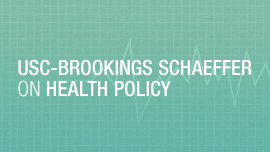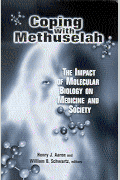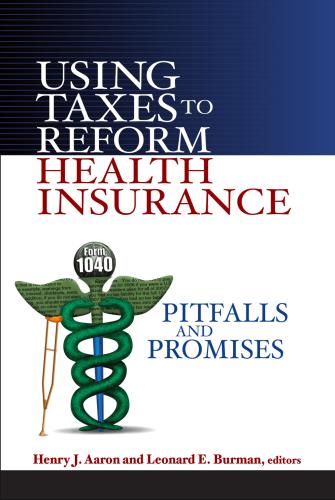What’s the latest in health policy research? The Essential Scan, produced by the USC-Brookings Schaeffer Initiative for Health Policy, aims to help keep you informed on the latest research and what it means for policymakers. If you’d like to receive the biweekly Essential Scan by email, you can sign up here.
Medicaid Expansion Significantly Decreases Financial Pressure on Low-Income Individuals
 Study by: Kenneth Brevoort, Daniel Grodzicki, Martin B. Hackmann
Study by: Kenneth Brevoort, Daniel Grodzicki, Martin B. Hackmann
Low-income individuals who cannot afford health insurance live with the reality that an adverse health shock could cause them significant financial distress, potentially destroying their livelihood. A new working paper finds that the Medicaid expansion provision of the Affordable Care Act (ACA) substantially improved the overall financial health of the newly insured. Medicaid expansion reduced the incidence of newly-accrued debt by 30-40 percent, lowered the likelihood of becoming newly delinquent on a debt obligation by 2.1 percent, and decreased total household medical debt in collection by $3.4 billion– or about $900 per treated person. Low-income individuals residing in states that adopted the Medicaid expansion also had improved access to credit– with significantly better terms– relative to individuals in non-adopting states. This study suggests that the benefits of public health insurance to low-income individuals go beyond the value of simply reducing out-of-pocket medical spending. Full article here.
Increases in Price and Intensity of Health Care Services Largely Drive Health Care Spending Growth
Study by: Joseph L. Dieleman, Ellen Squires, Anthony L. Bui, et al
Although it is common knowledge that U.S. health care spending is growing at a much faster rate than the total U.S. economy, it is not as apparent how different factors like population aging, disease prevalence, cost of care, and technology contribute to that spending growth. A new study that leverages 18 years of data on 155 health conditions shows 50 percent of the spending increase from 1996 to 2013 can be attributed to changes in service price and intensity, while 23.1 percent can be attributed to increases in U.S. population size and 11.6 percent can be attributed to the aging of the U.S. population. Changes in disease incidence and in utilization had very small impacts. However, when analyzing by condition, the authors found the influence of these five factors on health spending varied substantially. Full article here.
Hospital Readmissions Reduction Program Increases Mortality Rates among Heart Failure Patients
Study by: Ankur Gupta, Larry A. Allen, Deepak L. Bhatt, et al
In an attempt to decrease wasteful spending and limit hospital readmissions, CMS initiated a program in October 2012 called the Hospital Readmissions Reduction Program (HRRP) that financially penalizes hospitals with relatively high rates of Medicare readmissions. A recent analysis of the program found that while the program indeed lowered the 30-day and 1-year risk-adjusted readmission rate, it increased the 30-day and 1-year risk-adjusted mortality rate for Medicare patients hospitalized with heart failure. The authors speculate that these unintended consequences could be attributed to hospitals attempting to “game” the HRRP and escape the financial penalties or to the fact that the penalties of the HRRP have been shown to fall disproportionately on academic medical centers and safety net hospitals caring for sicker and more vulnerable patients. The authors’ findings suggest that policymakers reconsider the HRRP approach for heart failure patients. Full article here.
The Brookings Institution is committed to quality, independence, and impact.
We are supported by a diverse array of funders. In line with our values and policies, each Brookings publication represents the sole views of its author(s).











Commentary
The essential scan: Top findings in health policy research
November 16, 2017